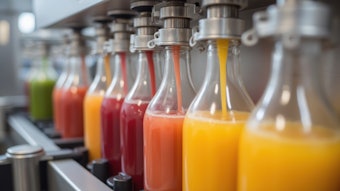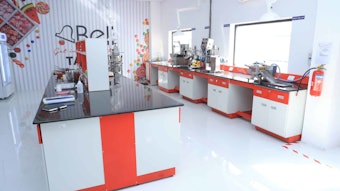The bulk of dry flavorings produced today are manufactured by spray drying or extrusion. These two processes “encapsulate” by physically trapping droplets (typically 0.5-4 µm in diameter) of flavor in a drying or solidifying matrix. The encapsulating matrix for spray drying is typically a gum (gum arabic) or a modified starch. The extension process disperses the flavor in a saturated molten carbohydrate mass. This molten carbohydrate is rapidly cooled thereby forming an amorphous glass which traps flavor inside.
The process of encapsulation via cyclodextrins is quite different. This process actually occurs on a molecular basis. The β-cyclodextrin molecule is a cyclic glucose polymer (7 units). The molecule assumes a configuration which has a slightly apolar center. Compounds which have molecular dimensions that match the cyclodextrin cavity can be included into the cyclodextrin molecule in the presence of water. In aqueous solution, the less polar cyclodextrin cavity is occupied by water; however, water is readily substituted by appropriate “guest molecules” which are less polar than water. The flavor/cyclodextrin complex which is formed is quite stable. The water volubility of this flavor/cyclodextrin complex is greatly reduced relative to the uncompleted cyclodextrin. Therefore, the flavor/cyclodextrin complex readily precipitates out of solution and can simply be filtered out for recovery.
Numerous authors have reported the utility of cyclodextrins for the encapsulation of flavor compounds. Other researchers have used cyclodextrins to specifically remove off-flavor components from a product. The cyclodextrin property of selective binding prompted us to initiate this study. It was of interest to determine the specificity of β-cyclodextrin encapsulation of flavor compounds typically used in the formulation of artificial fruit flavors.










